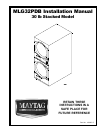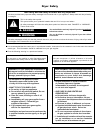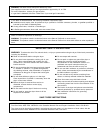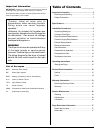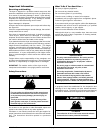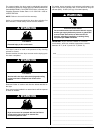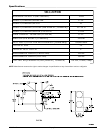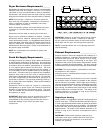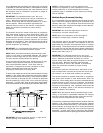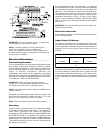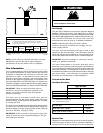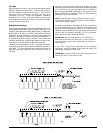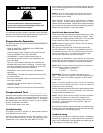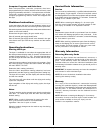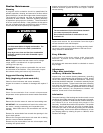
113062-17 Maytag Co. 5
Important Information ________________
Receiving and Handling
The dryer is shipped in a protective stretch wrap cover with
protective cardboard corners and top cover (or optional box)
as a means of preventing damage in transit. Upon delivery,
the dryer and packaging, and wooden skid should be visually
inspected for shipping damage. If any damage is noticed,
inspect further before delivering carrier leaves.
Dryers damaged in shipment:
All dryers should be inspected upon receipt and before they
are signed for.
If there is suspected damage or actual damage, the trucker’s
receipt should be so noted.
If the dryer is damaged beyond repair, it should be refused.
Those dryers, which were not damaged in a damaged
shipment, should be accepted, but the number received and
the number refused must be noted on the receipt.
If you determine that the dryer was damaged after the trucker
has left your location, you should call the delivering carrier’s
freight terminal immediately and file a claim. The freight
company considers this concealed damage. This type of
freight claim is very difficult to get paid and becomes extremely
difficult when more than a day or two passes after the freight
was delivered. It is your responsibility to file freight claims.
Dryer or parts damaged in transit cannot be claimed under
warranty.
Freight claims are the responsibility of the consignee, and
all claims must be filed at the receiving end. The manufacturer
assumes no responsibility for freight claims or damages.
IMPORTANT: The tumbler section of the dryer must be
transported and handled in an upright position at all times.
Safety Precautions
Fire Hazard
For your safety, the information in this manual must
be followed to minimize the risk of fire or explosion
or to prevent property damage, personal injury, or
loss of life.
The dryer must never be operated with any of the
back guards, outer tops, or service panels removed.
Personal injury or fire could result.
▲ WARNING
!
What To Do If You Smell Gas …
Do not try to light any appliance.
Do not touch any electrical switch.
Do not use any phone in your building.
Clear the room, building, or area of all occupants.
Immediately call your gas supplier from a neighbor’s phone.
Follow the gas supplier’s instructions.
If you cannot reach your gas supplier, call the fire department.
Installation and service must be performed by a qualified
installer, service agency, or gas supplier.
Dryers must be exhausted to the outdoors.
Although this dryer is a very versatile dryer, there are some
articles that, due to fabric composition or cleaning method,
should not be dried in it.
Do not store or use gasoline or other flammable vapors and
liquids in the vicinity of this or any other appliance.
Purchaser or user should consult the local gas supplier for
proper instructions to be followed in the event the user smells
gas. The instructions should be posted in a prominent
location.
Explosion Hazard
Dry only water washed fabrics. Do not dry articles
spotted or washed in dry cleaning solvents, a
combustible detergent, or “all purpose” cleaner.
Explosion could result.
Do not dry rags or articles coated or contaminated
with gasoline, kerosene, oil, paint, or wax.
Explosion could result.
Do not dry mop heads. Contamination by wax or
flammable solvents will create a fire hazard.
Do not use heat for drying articles that contain
plastic, foam, sponge rubber, or similarly textured
rubber materials. Drying in a heated tumbler may
damage plastics or rubber and may be a fire hazard.
▲ WARNING
!
A program should be established for the inspection and
cleaning of lint in the heating unit area, exhaust ductwork,
and inside the dryer. The frequency of inspection and cleaning
can best be determined from experience at each location.
Fire Hazard
The collection of lint in the burner area and exhaust
ductwork can create a potential fire hazard.
▲ WARNING
!



